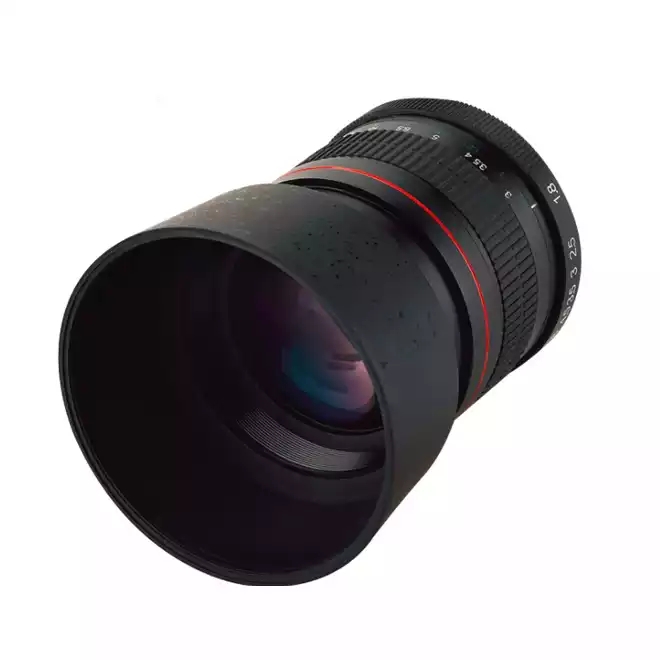How does the camera lens affect the photo?
The camera lens has two fingers in film and television, one refers to the optical components used by movie cameras and projectors to generate images, and is composed of multiple camera lenses. Various camera lenses have different modeling characteristics, and their application in photographic modeling constitutes a means of optical expression; the second refers to a continuous picture taken from power on to power off, or a segment between two editing points , also called a shot. One finger and two fingers are two completely different concepts. In order to distinguish the difference between the two, one is often referred to as an optical camera lens, and the other is referred to as a camera lens image.
1. Focal length: The focal length of the camera lens determines the perspective and depth of field of the photo. Shorter focal lengths (wide-angle camera lenses) capture wider scenes and are good for landscapes, architecture, etc., while longer focal lengths (telephoto camera lenses) get closer and are good for long-distance shots or portraits of people.
2. Aperture: The aperture of the camera lens determines the exposure and background blur effect of the photo. A larger aperture (small aperture value) can get more light into the camera, suitable for shooting in low light conditions, and can produce a shallow depth of field effect, highlighting the subject; while a smaller aperture (large aperture value) can get more Wide depth of field, suitable for scenes that require overall clarity.
3. Pixel quality: The pixel quality of the camera lens determines the clarity and detail performance of the photo. High-quality camera lenses can provide higher resolution and color reproduction capabilities, making photos sharper, more detailed and more realistic.
4. Contrast and color: Different camera lenses have different performances on contrast and color. Some camera lenses may exhibit high contrast and saturation, making photos more vibrant and vibrant, while others may be more neutral, ideal for post-production adjustments and custom colors.
5. Distortion and chromatic aberration: Some low-quality camera lenses may suffer from distortion and chromatic aberration, which can cause image edge distortion, color shift, etc. High-quality camera lenses usually reduce or eliminate these problems through optimized design and special coatings.
6. Defocus effect: Some special camera lenses, such as fisheye camera lens and macro camera lens, have a special defocus effect, which can create unique visual effects and artistic expression.
camera lens is one of the important factors that determine the quality of photos. Different camera lenses have different characteristics and application scenarios, and choosing a suitable camera lens can help us capture more expressive and artistic photos. Therefore, it is very important to understand the impact of camera lenses when purchasing cameras and camera lenses.

1. Focal length: The focal length of the camera lens determines the perspective and depth of field of the photo. Shorter focal lengths (wide-angle camera lenses) capture wider scenes and are good for landscapes, architecture, etc., while longer focal lengths (telephoto camera lenses) get closer and are good for long-distance shots or portraits of people.
2. Aperture: The aperture of the camera lens determines the exposure and background blur effect of the photo. A larger aperture (small aperture value) can get more light into the camera, suitable for shooting in low light conditions, and can produce a shallow depth of field effect, highlighting the subject; while a smaller aperture (large aperture value) can get more Wide depth of field, suitable for scenes that require overall clarity.
3. Pixel quality: The pixel quality of the camera lens determines the clarity and detail performance of the photo. High-quality camera lenses can provide higher resolution and color reproduction capabilities, making photos sharper, more detailed and more realistic.
4. Contrast and color: Different camera lenses have different performances on contrast and color. Some camera lenses may exhibit high contrast and saturation, making photos more vibrant and vibrant, while others may be more neutral, ideal for post-production adjustments and custom colors.
5. Distortion and chromatic aberration: Some low-quality camera lenses may suffer from distortion and chromatic aberration, which can cause image edge distortion, color shift, etc. High-quality camera lenses usually reduce or eliminate these problems through optimized design and special coatings.
6. Defocus effect: Some special camera lenses, such as fisheye camera lens and macro camera lens, have a special defocus effect, which can create unique visual effects and artistic expression.





